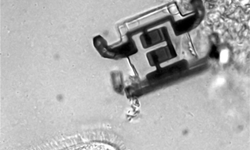“Our results raise questions about the evolution of the Moon's magnetic field with their finding of the presence of an inner core and provide important insights into the timeline of the lunar bombardment during the first billion years of the Solar System,” said the team, led by astronomer Arthur Briaud of France's National Center for Scientific Research.
Seismic data is the most effective way to study the internal structure of objects in the Solar System.
How the acoustic waves produced by earthquakes travel through a planet or satellite and reflect off the materials there can help scientists build a detailed map of the internal structure of that object.
We have lunar seismic data collected from the Apollo mission, but the resolution of this data is not high enough to accurately determine the state of the inner core.
We know that a liquid outer core exists, but what this outer core consists of is still controversial.
With the Apollo data, both a solid inner core and a completely liquid core model work equally well.
The Moon's core is very similar to Earth's core
The team found that models that show an active overturn deep in the Moon's mantle layer are very much in line with what we know about the Moon.
This means that the denser material inside the Moon moves towards the center and the less dense material rises upwards.
This movement has long been proposed as a way to explain the presence of certain elements found in some volcanic regions on the Moon. The team's research provides new evidence in favor of this theory.
They also found that the Moon's core is very similar to Earth's. There is a liquid layer on the outside and a solid core inside.
According to their modeling, the outer core has a radius of about 362 kilometers and the inner core about 258 kilometers. This is about 15 percent of the Moon's total radius.
The team also found that the density of the inner core is about 7,822 kilograms/cubic meter. This is very close to the density of iron.
We know that the Moon had a strong magnetic field shortly after its formation, but that this field began to weaken about 3.2 billion years ago. This kind of magnetic field is generated by motion and convection within the core, so what the Moon's core is is of profound importance to how and why the magnetic field disappeared.
Given humanity's hopes of returning to the Moon, we may not have to wait long to see seismic confirmation of these findings.
The research was published in the journal Nature.
















